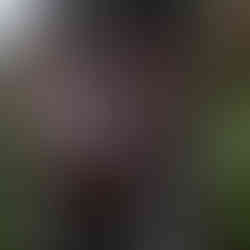Vietnam Lacquer Tree and Cultivation
- Nacipe
- Aug 5
- 4 min read
Updated: Aug 10
The lacquer tree (Rhus Succedanea) is an industrial crop cultivated for its resin, which serves various industrial and household production purposes. Although many synthetic adhesives and modern lacquers have been developed for furniture and household manufacturing—offering speed and cost advantages—few materials can match the durability and aesthetic quality of traditional Vietnamese lacquer (sơn ta). When properly processed and combined with fine sawdust, lacquer becomes a highly adhesive resin used to bond joints in wooden furniture, ensuring exceptional strength and stability over time.
"Sơn ta" is also the foundational material for producing lacquer color and lacquerware, both of which remain irreplaceable in Vietnamese fine arts and crafts. These traditional lacquers are highly sought after in international markets due to their handcrafted quality and durability.
Common Rhus Succedanea (Lacquer) Varieties in Vietnam
There are three main types of Vietnamese lacquer trees: Red resin, White resin, and “Mo ga” resin. While White Resin Tree produces more resin, its quality is generally considered inferior to that of Red Resin. The latter is more durable and yields higher-quality sap.

Vietnam Lacquer Tree Cultivation
In the past, Rhus Succedanea trees were grown by directly sowing seeds into the soil. Today, the modern method involves germinating seeds into saplings, transferring them into planting bags, and later planting them in fields—similar to methods used for eucalyptus and acacia. Planting density depends on soil fertility: in rich soil, trees are spaced 2–2.5 meters apart; in poorer soil, spacing narrows to 1.5–2 meters.
Vietnam lacquer tree cultivation is relatively straightforward, but nutrient management during the establishment phase is crucial. The trees respond well to organic fertilizers but are highly sensitive to chemical fertilizers. In the first year, a small dose of nitrogen can support growth, but excessive application may cause "green death"—a condition where trees appear healthy but fail to produce sap.
Tapping Techniques and Harvesting Process
After 3 years, Rhus Succedanea trees are ready for tapping. In the first year, resin is tapped from one side of the trunk (called “first face”), and in the following year, from the opposite side (“core opening”). The tapping knife is held at a 5–10° upward angle to guide the sap inward toward the cut, allowing it to drip into a collection jar rather than running down the bark. Cutting thickness is critical: a fine V-shaped cut (~1 mm) allows resin to flow slowly and steadily, yielding better quality, while thick cuts release resin quickly but only for a short time, resulting in poor-quality sap.
In contrast, China prioritizes yield, so the incisions are deeper and wider, which often leads to faster tree exhaustion. Japan follows a tiered tapping method with very fine and shallow cuts, aiming to collect the highest-quality sap for premium-grade urushi lacquer.
Above are Vietnam tapping shape - Japan tapping shape - China tapping shape.
Challenges and Weather Sensitivity
Weather conditions greatly affect sap quality. Rain can dilute the resin and make it unusable, while high temperatures may cause the resin to dry prematurely inside the jar. Therefore, tapping is typically performed early—between 1–2 AM and 7–8 AM—and must finish by 9 AM on hot days. Farmers often begin work before dawn, using lanterns if necessary. This demanding schedule and sensitivity to environmental conditions are key reasons why, despite being easy to grow, Rhus Succedanea tree farming has not yet expanded widely in Vietnam.
Processing Methods of Raw Vietnamese Lacquer Resin
Vietnamese lacquer resin refers to the freshly tapped, unprocessed resin collected from the trunks of Rhus succedanea trees. Immediately after collection, the resin undergoes an initial filtration to remove large foreign materials such as fragments of bark, insects, and other impurities. Because fresh lacquer resin contains a high proportion of water — typically between 30% and 50%, depending on the season — it requires careful post-harvest treatment.
Traditionally, farmers transfer the raw resin into specially prepared plastic bags in a bucket. These buckets are stored in cool, shaded areas, often beneath floorboards, to allow the resin to undergo controlled fermentation. Each day, the lid is carefully lifted, and any fermentation foam that forms on the surface is manually removed. After about a month or two of fermentation, the material matures into what is known as crude lacquer, recognizable by its brownish hue and still containing 20% to 30% moisture. At this time, the water sinks into the lowest layer which is removed by farmers later on.
To produce usable raw lacquer, the crude lacquer must be fermented for at least 6 months and filtered again to eliminate residual mud, clay, and fine debris such as sawdust. The resin is then subjected to grinding and stirring at ambient temperatures or, alternatively, with the aid of infrared heating to accelerate the process. This step yields a refined lacquer. At this point, pigments such as natural iron oxide or soot may be blended into the lacquer to create colored varieties suitable for lacquerware production.
During the film-forming and curing stages, Vietnamese lacquer is known for its slow drying time. Typically, it takes over 24 hours to cure under standard conditions and may require as long as 10 to 15 days for full drying, depending on environmental factors. This slow curing behavior is largely attributed to the resin’s high content of saturated and monoenyl laccols, which polymerize gradually compared to other types of natural lacquer.








Comments